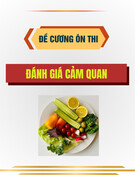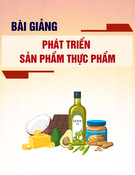
Int.J.Curr.Microbiol.App.Sci (2020) 9(11): 517-526
517
Original Research Article https://doi.org/10.20546/ijcmas.2020.911.063
Effect of Edible Coating and Packaging on Physiological and Sensory
Attributes of Litchi (Litchi chinensis Sonn.) Fruits
Shubham, N. K. Mishra, Ratna Rai, Ankit Dongariyal,
Ravi Kumar* and Tribhuwan Pratap
Department of Horticulture, College of Agriculture, Govind Ballabh Pant University of
Agriculture and Technology, Pantnagar, U. S. Nagar, Uttarakhand, India
*Corresponding author
A B S T R A C T
Introduction
Litchi (Litchi chinensis Sonn.) is an important
sub-tropical fruit with high commercial value
in the local as well as international market.
However, once detached from the tree, the
fruit loses its qualities, including sweet and
juicy flesh and attractive bright red pericarp
colour, within a couple of days under ambient
storage temperatures. The short storage life of
litchi limits the marketing of the litchi fruit
and has become one of the major constraints
in litchi industry, where a huge production
happens in a short season from mid-May to
early July (Huang, 2002). Generally, rapid
cooling after harvest and storage at low
temperature are one of the most prevalent
methods for maintaining the appearance and
quality of litchi fruit. It means that the
ambient temperature is one of the most
important factors affecting the litchi fruit
commercial value (Lin et al., 2011).
Harvested litchi fruits are a living organism
which breaths continuously during storage
process. The respiration produces the bio-heat
and causes the rise of temperature of fruit
group that accelerates water loss and
browning (Baldwin et al., 1995). Postharvest
browning of litchi fruit was generally thought
to be a rapid degradation of anthocyanins
International Journal of Current Microbiology and Applied Sciences
ISSN: 2319-7706 Volume 9 Number 11 (2020)
Journal homepage: http://www.ijcmas.com
An experiment was conducted to study the effect of edible coating and packaging
material on physiological and sensory quality of litchi fruits. For this, mature litchi
fruits were harvested from HRC, Patharchatta and the selected fruits were treated
with Guar Gum, Xanthan Gum and Methyl cellulose (low viscosity and high
viscosity)as edible coating at different concentration (0.5%, 1.0%, 2.0%, 2.5%)
and stored at 4 ± 1 °C under 90 ± 5% RH. The results revealed that edible coating
significantly influenced the fruit quality. The physiological loss in fruit weight,
shrinkage in fruit length and breadth, volume and sensory characteristics was
significantly improved with 0.15% guar gum along with packaging in perforated
brown paper bag.
K e y w o r d s
Edible Coating and
Packaging, Litchi,
Litchi chinensis
Accepted:
07 October 2020
Available Online:
10 November 2020
Article Info

Int.J.Curr.Microbiol.App.Sci (2020) 9(11): 517-526
518
caused by polyphenol oxidase, producing
brown by-products (Jiang, 2000). Postharvest
treatments, including Sulphur fumigation and
acid dip can effectively inhibited polyphenol
oxidase activity and thus delay loss of red
pericarp colour of litchi fruit (Zauberman et
al., 1991). Therefore, there is a need for
alternative novel practices to control
respiration rate of the produce which
automatically reduces the bio-heat and the
resulting fruit temperature change during
handling, distribution and retail sale without
toxic effects in harvested litchi fruits (Jiang et
al., 2003). Application of edible coatings is
promising to improve the quality and extend
shelf life of produce. There are several
advantages associated with edible coatings
like, they may be eaten by the consumers
along with food, and their use could reduce
the waste and solve the solid disposal
problem. Besides, they also enhance the
organoleptic, mechanical or nutritional
properties of fruit, and they can reduce the
cost by utilizing byproducts. Attempts to
reduce crop losses and maintaining the quality
of fresh fruit over a long period of time are a
priority for all the producers of horticultural
crops.Keeping in views the importance and
perish ability nature of litchi fruits, an attempt
has been made in the present study to evaluate
the effect of packing and edible coating on
shelf life and physical characteristics of litchi
fruits by applying Xanthan gum, guar gum
and methylcellulose as coating materials.
Materials and Methods
The present experiment was carried out in the
Post-graduate Laboratory, Department of
Horticulture, GBPU&T Pantnagar, U.S.
Nagar, Uttarakhand. The fruits were collected
from HRC, Patharchatta located at the North-
West Plains of Tarai region of Uttarakhand at
an altitude of 243.83 meters above the mean
sea level. There was a total of 17 treatments
combination i.e. without coating + without
packaging material (T0); Without coating +
Perforated brown paper bag(T1); Guar Gum
0.5% (T2); Guar Gum 1.0% (T3); Guar Gum
1.5% (T4); Guar Gum 2.0% (T5); Xanthan
Gum 0.5% (T6); Xanthan Gum 1.0 % (T7);
Xanthan Gum 1.5% (T8); Xanthan Gum 2.0%
(T9); Methyl Cellulose (low viscosity) 0.5%
(T10); Methyl Cellulose (low viscosity) 1.0%
(T11); Methyl Cellulose (low viscosity) 1.5%
(T12); Methyl Cellulose (low viscosity) 2.0%
(T13);Methyl Cellulose (high viscosity) 0.5%
(T14); Methyl Cellulose (high viscosity) 1.0%
(T15); Methyl Cellulose (high viscosity) 1.5%
(T16) and Methyl Cellulose (high viscosity)
2% (T17) with 3 replication. Xanthan and guar
gum solutions were prepared as per method
given by Ruelas-Chacón et al., 2017. The
methyl cellulose solution (both low viscosity
and high viscosity) was prepared by
solubilizing the methyl cellulose powder in a
mixture of water and ethyl alcohol (2: 1) at 75
° C in a high-speed mixer (900 rpm) for 15
minutes.
In all the treatments, glycerol (1%) was added
as plasticizer and ascorbic acid (1%) as an
antioxidant. After uniform application of all
the coating materials, fruits were placed in the
perforated brown paper bags. There after
packaged fruits were stored at low
temperature (4°C±l°C) and 85-90% related
humidity in a refrigerator for further studies.
Observations were recorded at two days
interval (0, 2, 4, 6, 8, 10 and 12th day). Fruit
length and breadth was measured with the
help of digital Vernier calipers. The water
displacement method was used to measured
volume of the litchi fruits. On initial day fruits
were weighed on an electronic weighing
balance and were reweighed at 2 days
interval. The weight loss was determined and
expressed as percent loss from initial weight.
Organoleptic evaluation was carried out on
the basis of fruit appearance (colour), taste
and flavor. It was assessed on the basis of
scoring, as per the hedonic scale ranging from

Int.J.Curr.Microbiol.App.Sci (2020) 9(11): 517-526
519
9 to 1, where 9 being the most favorable one
noted as “like extremely” and 1 being the
least acceptable determined as “dislike
extremely”. The data was analyzed on two
factorial completely randomized design
(Factorial C.R.D.) as described by Snedecor
and Cochran (1987).
Results and Discussion
Physiological loss in weight (%)
In the present experiment, it was observed
that packaging and edible coatings
significantly affected the physiological loss in
weight with the advancement of the storage
duration (Table 1). The maximum loss in the
physiological weight (7.17 %) was recorded
in T0i.e. fruits without coating and packaging,
followed by T1 i.e. fruits without coating and
packed in perforated brown paper bag
(7.08%); whereas, the minimum physiological
loss in weight (5.41%) was recorded in fruits
coated with 1.5 per cent guar gum and packed
in perforated brown paper bags.
The mean values regarding storage period
revealed that there was sharp increase in per
cent physiological loss in weight from 6th to
12thday. The reduction in physiological loss in
weight in coated fruits was probably due to
the effect of these coating materials acting as
a semi permeable barrier against oxygen,
carbon dioxide, moisture and solute
movement, thereby reducing respiration rate,
water loss and oxidation reaction rates
(Baldwin et al., 1999).
Table.1 Effect of different treatments and storage intervals on the
physiological loss in weight (%) of litchi fruits
Treatments
Day-0
Day-2
Day-4
Day-6
Day-8
Day-10
Day-12
Mean A
T0
0.00
2.52
4.40
6.51
10.22
12.63
13.88
7.17
T1
0.00
2.25
4.34
6.30
10.10
12.66
13.72
7.08
T2
0.00
2.52
4.26
6.12
8.43
11.44
12.60
6.48
T3
0.00
1.19
3.11
5.23
8.93
11.27
12.30
6.00
T4
0.00
1.14
2.96
4.99
7.73
10.06
10.98
5.41
T5
0.00
2.17
4.09
6.21
9.91
12.25
13.27
6.84
T6
0.00
1.88
3.80
5.92
9.62
11.96
12.99
6.60
T7
0.00
2.52
4.26
6.12
8.43
11.44
12.60
6.48
T8
0.00
1.65
3.57
5.69
9.39
11.73
12.76
6.40
T9
0.00
1.17
3.00
4.99
7.99
10.32
11.29
5.54
T10
0.00
2.44
4.36
6.48
10.18
12.52
13.55
7.05
T11
0.00
1.35
3.27
5.39
9.09
11.43
12.46
6.14
T12
0.00
1.24
3.16
5.28
8.98
11.32
12.35
6.05
T13
0.00
2.16
4.08
6.20
9.90
12.24
13.27
6.84
T14
0.00
2.36
4.28
6.40
10.10
12.44
13.47
7.01
T15
0.00
1.55
3.47
5.59
9.29
11.63
12.66
6.31
T16
0.00
1.90
3.82
5.94
9.64
11.98
12.88
6.60
T17
0.00
2.12
4.04
6.16
9.86
12.20
13.23
6.80
Mean B
0.00
1.90
3.79
5.86
9.32
11.75
12.79
Factors
C.D.
SE(m)
Factor(A)
0.14
0.05
Factor(B)
0.09
0.03
Factor (A X B)
0.38
0.14

Int.J.Curr.Microbiol.App.Sci (2020) 9(11): 517-526
520
Table.2 Effect of different treatments and storage intervals on fruit length (mm) of litchi
Treatments
Day-0
Day-2
Day-4
Day-6
Day-8
Day-10
Day-12
Mean A
Shrinkage %
T0
34.64
34.61
34.54
34.46
34.41
34.39
33.24
34.33
4.04
T1
34.14
33.94
33.75
33.44
33.29
33.09
32.89
33.51
3.66
T2
34.41
34.24
34.03
33.73
33.57
33.40
33.19
33.80
3.55
T3
34.64
34.47
34.26
33.96
33.79
33.63
33.42
34.02
3.52
T4
34.71
34.66
34.50
34.36
34.23
34.05
33.86
34.34
2.45
T5
34.75
34.58
34.37
34.07
33.91
33.74
33.53
34.14
3.51
T6
35.14
34.97
34.76
34.46
34.30
34.13
33.92
34.53
3.47
T7
34.27
34.10
33.90
33.60
33.43
33.26
33.05
33.66
3.56
T8
34.31
34.14
33.93
33.63
33.47
33.30
33.10
33.70
3.53
T9
35.10
34.93
34.72
34.42
34.26
34.09
33.88
34.49
3.48
T10
34.71
34.54
34.33
34.03
33.87
33.70
33.49
34.10
3.51
T11
34.67
34.50
34.30
34.00
33.83
33.66
33.48
34.06
3.43
T12
35.32
35.15
34.95
34.65
34.48
34.31
34.10
34.71
3.45
T13
34.51
34.34
34.14
33.84
33.67
33.51
33.32
33.91
3.45
T14
34.21
34.04
33.84
33.54
33.37
33.20
32.99
33.60
3.57
T15
35.10
34.93
34.73
34.43
34.26
34.09
33.88
34.49
3.48
T16
34.73
34.56
34.36
34.06
33.89
33.72
33.51
34.12
3.51
T17
35.40
35.23
35.03
34.73
34.56
34.39
34.18
34.79
3.45
Mean B
34.71
34.55
34.36
34.08
33.92
33.76
33.50
Factors
C.D.
SE(m)
Factor(A)
0.54
0.19
Factor(B)
0.33
0.12
Factor (A X B)
N/A
0.51
Table.3 Effect of different treatments and storage intervals on the fruit breadth (mm) of litchi
Treatments
Day-0
Day-2
Day-4
Day-6
Day-8
Day-10
Day-12
Mean A
Shrinkage %
T0
32.09
31.98
31.78
31.48
31.28
31.11
30.00
31.39
6.51
T1
32.08
31.97
31.77
31.47
31.27
31.11
30.02
31.39
6.42
T2
32.05
31.94
31.74
31.44
31.24
31.07
30.95
31.49
3.43
T3
32.07
31.96
31.76
31.46
31.26
31.09
30.97
31.51
3.43
T4
31.90
31.81
31.72
31.63
31.54
31.45
31.34
31.63
1.76
T5
31.56
31.45
31.25
30.95
30.75
30.58
30.46
31.00
3.49
T6
31.93
31.82
31.62
31.32
31.12
30.95
30.83
31.37
3.45
T7
32.14
32.03
31.83
31.53
31.33
31.16
31.04
31.58
3.42
T8
32.33
32.22
32.02
31.72
31.52
31.35
31.23
31.77
3.40
T9
32.08
31.97
31.77
31.47
31.27
31.11
30.99
31.52
3.40
T10
32.07
31.91
31.75
31.59
31.43
31.27
31.12
31.59
2.96
T11
31.55
31.44
31.24
30.94
30.74
30.58
30.45
30.99
3.49
T12
31.90
31.79
31.59
31.29
31.09
30.92
30.80
31.34
3.45
T13
32.42
32.31
32.11
31.81
31.61
31.44
31.34
31.86
3.33
T14
32.06
31.95
31.75
31.45
31.25
31.09
30.97
31.50
3.40
T15
31.88
31.77
31.57
31.27
31.07
30.90
30.78
31.32
3.45
T16
32.09
31.98
31.78
31.48
31.28
31.11
30.99
31.53
3.43
T17
31.85
31.74
31.54
31.24
31.04
30.88
30.76
31.29
3.42
Mean B
32.00
31.89
31.70
31.42
31.23
31.07
30.84
Factors
C.D.
SE(m)
Factor (A)
0.46
0.17
Factor (B)
0.29
0.10
Factor (A X B)
N/A
0.44

Int.J.Curr.Microbiol.App.Sci (2020) 9(11): 517-526
521
Table.4 Effect of different treatments and storage intervals on the volume (ml) of litchi fruits
Treatments
Day-0
Day-2
Day-4
Day-6
Day-8
Day-10
Day-12
Mean A
% decrease
T0
21.25
20.90
20.35
20.05
19.78
19.36
18.98
20.10
10.68
T1
21.23
20.95
20.48
20.13
19.85
19.44
19.14
20.17
9.84
T2
21.12
20.84
20.39
20.07
19.79
19.38
19.17
20.11
9.23
T3
21.19
21.02
20.82
20.65
20.39
20.15
19.89
20.59
6.13
T4
21.27
21.07
20.86
20.64
20.48
20.24
20.11
20.67
5.45
T5
21.21
20.94
20.49
20.17
19.89
19.48
19.27
20.21
9.15
T6
21.12
20.84
20.39
20.08
19.79
19.38
19.18
20.11
9.19
T7
21.24
20.96
20.51
20.19
19.91
19.50
19.29
20.23
9.18
T8
21.13
20.85
20.41
20.09
19.81
19.40
19.19
20.13
9.18
T9
21.29
21.12
20.92
20.75
20.49
20.25
20.13
20.71
5.45
T10
21.34
21.06
20.61
20.29
20.01
19.60
19.39
20.33
9.14
T11
21.02
20.74
20.29
19.97
19.69
19.28
19.07
20.01
9.28
T12
21.15
21.02
20.88
20.67
20.45
20.18
19.96
20.62
5.63
T13
21.28
21.00
20.55
20.23
19.95
19.54
19.33
20.27
9.16
T14
21.32
21.04
20.59
20.27
19.99
19.58
19.37
20.31
9.15
T15
20.91
20.65
20.20
19.88
19.60
19.19
18.98
19.92
9.23
T16
21.15
20.87
20.42
20.10
19.82
19.41
19.20
20.14
9.22
T17
21.22
20.94
20.49
20.18
19.90
19.49
19.28
20.21
9.14
Mean B
21.19
20.93
20.54
20.25
19.98
19.60
19.39
Factors
C.D.
SE(m)
Factor(A)
0.33
0.12
Factor(B)
0.21
0.07
Factor (A X B)
N/A
0.31
Table.5 Effect of different treatments and storage intervals on appearance of litchi fruits
Treatments
Day-0
Day-2
Day-4
Day-6
Day-8
Day-10
Day-12
Mean A
T0
9.00
6.42
6.14
5.92
5.80
5.69
4.45
6.20
T1
9.00
7.02
6.68
6.34
5.78
5.34
4.20
6.34
T2
9.00
7.75
7.48
7.25
7.08
6.93
5.89
7.34
T3
9.00
7.54
7.28
7.05
6.88
6.73
5.69
7.17
T4
9.00
8.21
7.94
7.71
7.54
7.39
6.40
7.74
T5
9.00
7.23
6.97
6.65
6.48
6.33
5.25
6.85
T6
9.00
7.12
6.86
6.63
6.46
6.31
5.27
6.81
T7
9.00
7.52
7.26
7.03
6.86
6.71
5.67
7.15
T8
9.00
7.44
7.18
6.95
6.78
6.63
5.59
7.08
T9
9.00
8.05
7.79
7.56
7.39
7.24
6.25
7.61
T10
9.00
7.82
7.56
7.33
7.16
7.01
5.97
7.41
T11
9.00
7.74
7.48
7.25
7.08
6.93
5.89
7.34
T12
9.00
7.98
7.72
7.49
7.32
7.17
6.20
7.56
T13
9.00
6.98
6.72
6.49
6.32
6.17
5.13
6.69
T14
9.00
7.47
7.21
6.98
6.81
6.66
5.62
7.11
T15
9.00
7.23
6.97
6.76
6.59
6.44
5.40
6.91
T16
9.00
7.04
6.78
6.55
6.38
6.23
5.19
6.74
T17
9.00
7.13
6.87
6.64
6.47
6.32
5.28
6.82
Mean B
9.00
7.43
7.16
6.92
6.73
6.57
5.52
Factors
C.D.
SE(m)
Factor(A)
0.10
0.03
Factor(B)
0.06
0.02
Factor (A X B)
0.25
0.09

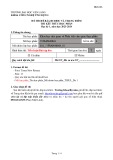


![Bài giảng Thiết kế sản phẩm nội thất [mới nhất]](https://cdn.tailieu.vn/images/document/thumbnail/2022/20221025/phuongnhan205/135x160/1650104673.jpg)
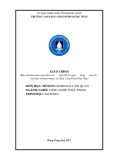


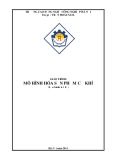

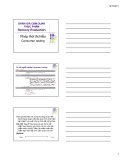
![Đề cương ôn thi Phụ gia thực phẩm [năm hiện tại]](https://cdn.tailieu.vn/images/document/thumbnail/2025/20251120/kimphuong1001/135x160/63671763608893.jpg)
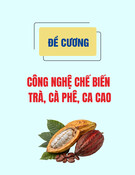
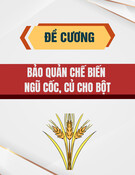

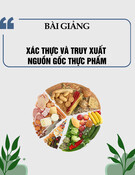
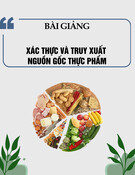


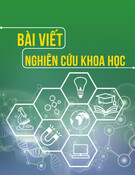
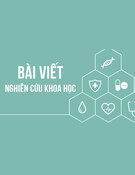
![Đề cương ôn thi giữa kì môn Đánh giá cảm quan trong kiểm soát chất lượng [năm]](https://cdn.tailieu.vn/images/document/thumbnail/2025/20251003/maihonghieu2004@gmail.com/135x160/69751759740815.jpg)
